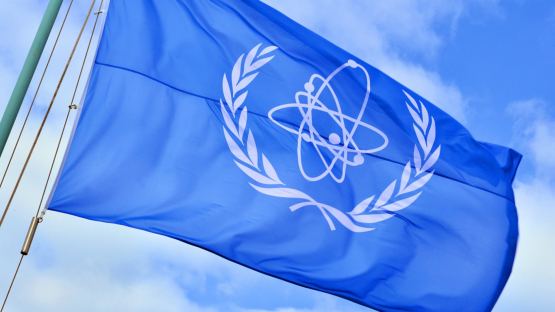IAEA microplastic pollution research goes on location in Antarctica

The International Atomic Energy Agency, in cooperation with Argentina, launched a scientific research expedition on January 6 to study microplastics in Antarctica—one of the planet’s most remote areas—as part of an effort to combat widespread microplastic pollution.
IAEA director general Rafael Mariano Grossi and Argentine president Javier Milei joined the IAEA scientific team at the Marambio and Esperanza Argentine Antarctic bases to mark the start of the mission. A two-person research team will stay behind for one month to investigate the occurrence and distribution of microplastics—particles less than 5 millimeters in diameter—in seawater, lakes, sediments, sand, discharge water, and animals of the Antarctic ecosystem near the Argentine Carlini scientific research station.
The problem: Microplastics in Antarctica are not just a symbol of the extent of pollution caused by humans. According to the IAEA, they can contribute to accelerating ice loss by reducing ice reflectivity, altering surface roughness, promoting microbial activity, acting as thermal insulators, and contributing to mechanical weakening of the ice structure. Combined with climate change, atmospheric conditions, and oceanic influences, microplastics will deepen the global impact of polar ice melting in Antarctica.
Researchers from the University of Tasmania first found microplastics in Antarctic coastal fast ice in 2009. But the type, volume, and distribution of microplastics in the Antarctic—and the extent of uptake by organisms—is unknown.
"The well-being of Antarctica, a true wilderness on Earth, is vital for the overall health of the planet,” said Grossi. “Extending our presence throughout the globe, we have brought our specialized expertise to Antarctica where our efforts can bring about much needed change."
NUTEC: The IAEA mission is being carried out through the IAEA’s NUTEC Plastics (Nuclear Technology for Controlling Plastic Pollution) initiative, established in 2020 to apply nuclear technologies to plastic pollution. A network of NUTEC Plastic Monitoring Laboratories is using nuclear and isotopic tracing techniques to characterize and assess marine microplastic pollution and demonstrate the use of ionizing radiation in plastic recycling.
In a March 2022 resolution, member states of the United Nations pledged to initiate negotiations for a new global treaty on banning plastic pollution including in the marine environment, with the goal of formal adoption by 2025. The IAEA expects its NUTEC network of laboratories to provide scientific evidence to support informed decision-making during the treaty negotiations and contribute to the resolution’s implementation, particularly in the marine environment.
On the ground: Over the next month, two IAEA experts will monitor the presence of microplastics in the environment at 22 sites near the Carlini research base in different environments: Antarctic Ocean water, Antarctic lakes, and Antarctic land. They will take seawater samples from 12 sites, sediment samples from four sites, three samples from lakes, and three samples from different sandy beaches. The team will also monitor the presence of microplastics in organisms by collecting clams, limpets, and penguin feces.
Samples will be collected and prepared by the IAEA team and sent to the IAEA's Marine Environment Laboratories in Monaco to be analyzed. Researchers will use vibrational spectroscopy to count the number of microparticles and characterize the polymers in an attempt to identify the source of the pollution.
Samples will also be sent to the Instituto Antártico Argentino in Buenos Aires, where a new microscope and a spectrometer have been installed through the NUTEC initiative.







.jpg)